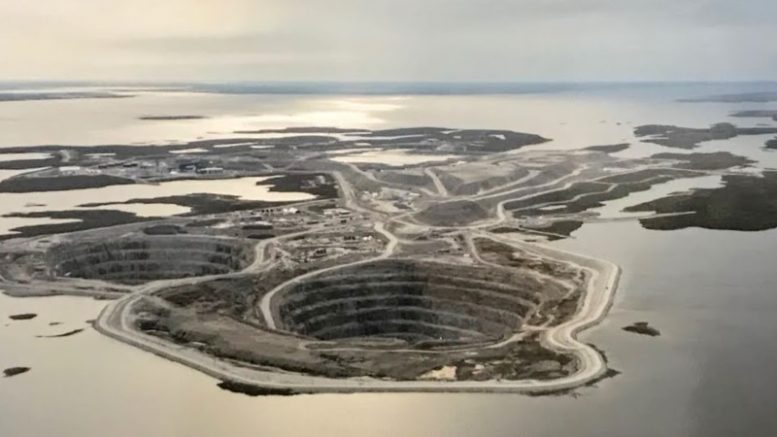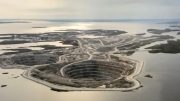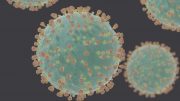Last updated March 22, 11:11 a.m.
Clarification, March 21 3:12 p.m.: This article has been updated to reflect that, while the pipeline had not been fixed as of 8:30 a.m. on March 21, its flow had been diverted.
A previous version of this article also stated, based on a GNWT release, the Diavik Environment Team was not informed of the spill until March 16. A spokesperson for the Department of Lands has corrected the date in that release to March 14.
A large spill at the Diavik Diamond Mine that started in early February presented a “grey area” for reporting, according to a spokesperson for Rio Tinto.
This left Diavik’s Environment Team, the GNWT and the public in the dark for more than a month.
The spokesperson for Rio Tinto, a media contact who declined to be named on the record, said operators made a judgement call about the spill, since it was leaking directly into the containment pond that was its ultimate destination.
However, the spokesperson acknowledged that, if a similar incident were to occur again, it would need to be reported right away. He said repairs on the pipeline will be conducted once weather conditions improve.
The spokesperson described the water that leaked into the containment pond, which was used for dust suppression in underground drilling, as “fairly clean.”
A statement from Rio Tinto reads, “We are taking this situation seriously and will ensure such incidents get reported within the required timeframes, as per our internal procedure and approved Management Plans,” reads a statement from Rio Tinto.
Because the spill emptied directly into the containment pond, the spokesperson said there are no additional measures to be taken to protect the environment.
No wastewater leaked into surrounding environment: GNWT
More than 450,000 cubic metres of wastewater have been released from a broken pipeline since Feb. 7. Diavik’s Environment Team was only made aware of the spill more than a month later, on March 14. As of the GNWT’s announcement of the spill, at 8:30 a.m. on March 21, the pipeline had not yet been fixed, although its flow had been diverted.
According to the GNWT, the spill was not reported when it was first discovered because it was releasing into its final destination, the North Inlet Containment Pond Area, and operators thought this did not need to be reported.
Inspectors with the GNWT have reportedly visited the site and found no wastewater had leaked into the surrounding environment, including Lac de Gras.
The GNWT has since ordered Diavik to fix the leak.

The location of the Diavik Diamond Mine on Lac de Gras. (CKLB photo)








